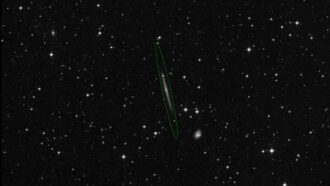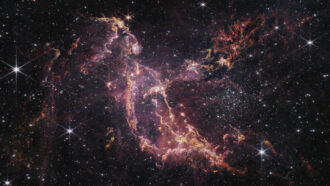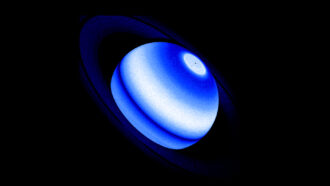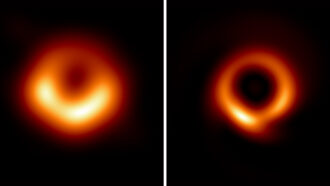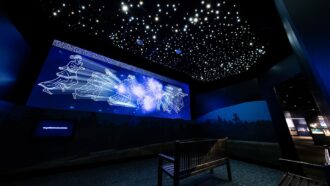A reappearing supernova offers a new measure of the universe’s expansion
Analyzing light from supernova Refsdal provides a new value of the Hubble constant

To calculate a new estimate of the Hubble constant, astronomers analyzed light from multiple appearances of supernova Refsdal (indicated with white arrows in this Hubble Space Telescope image).
NASA, ESA, AND T. TREU (UCLA), P. KELLY (UC BERKELEY) AND THE GLASS TEAM; S. RODNEY (JHU) AND THE FRONTIERSN TEAM; J. LOTZ (STSCI) AND THE FRONTIER FIELDS TEAM; M. POSTMAN (STSCI), AND THE CLASH TEAM; AND Z. LEVAY (STSCI)

